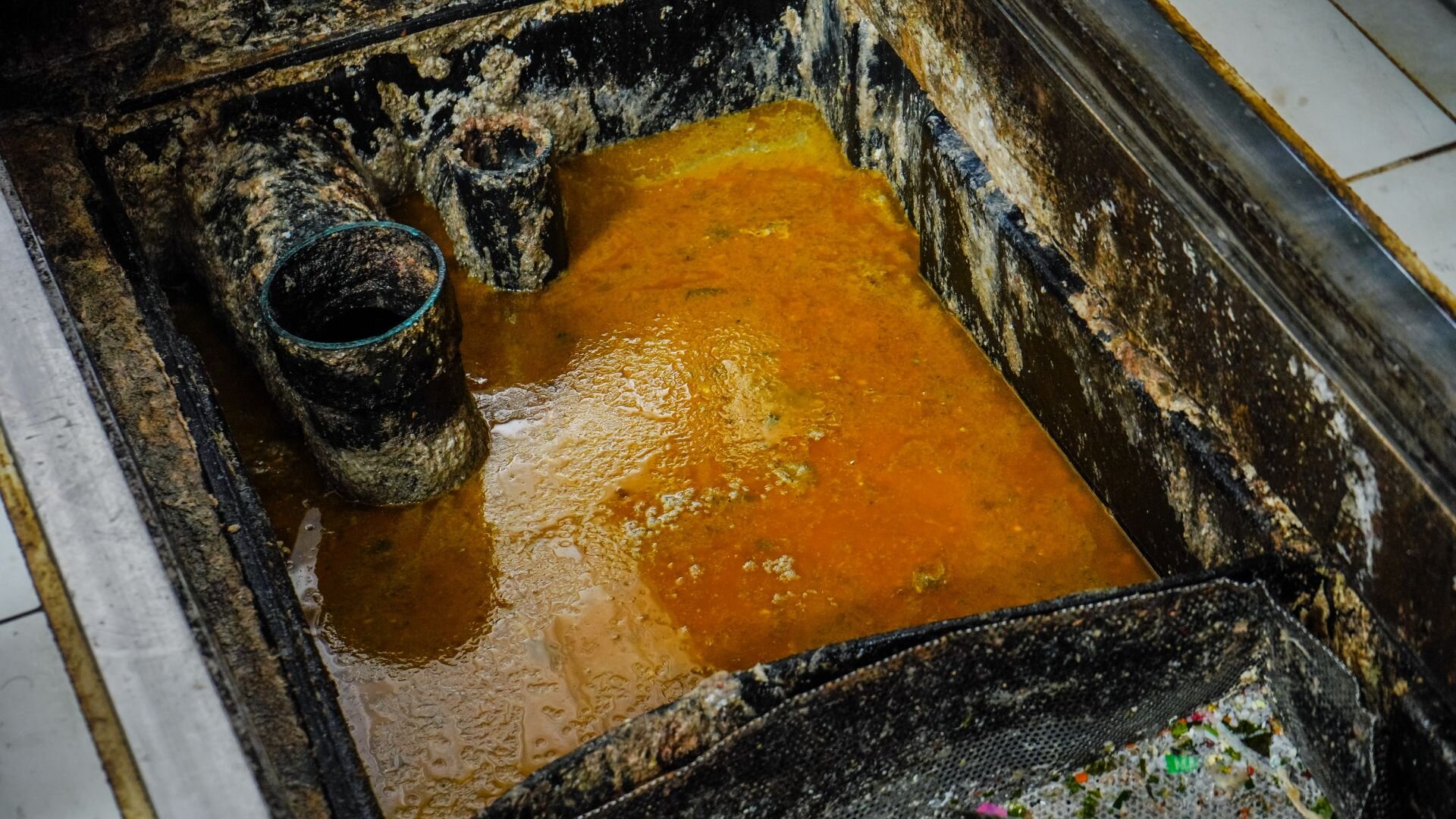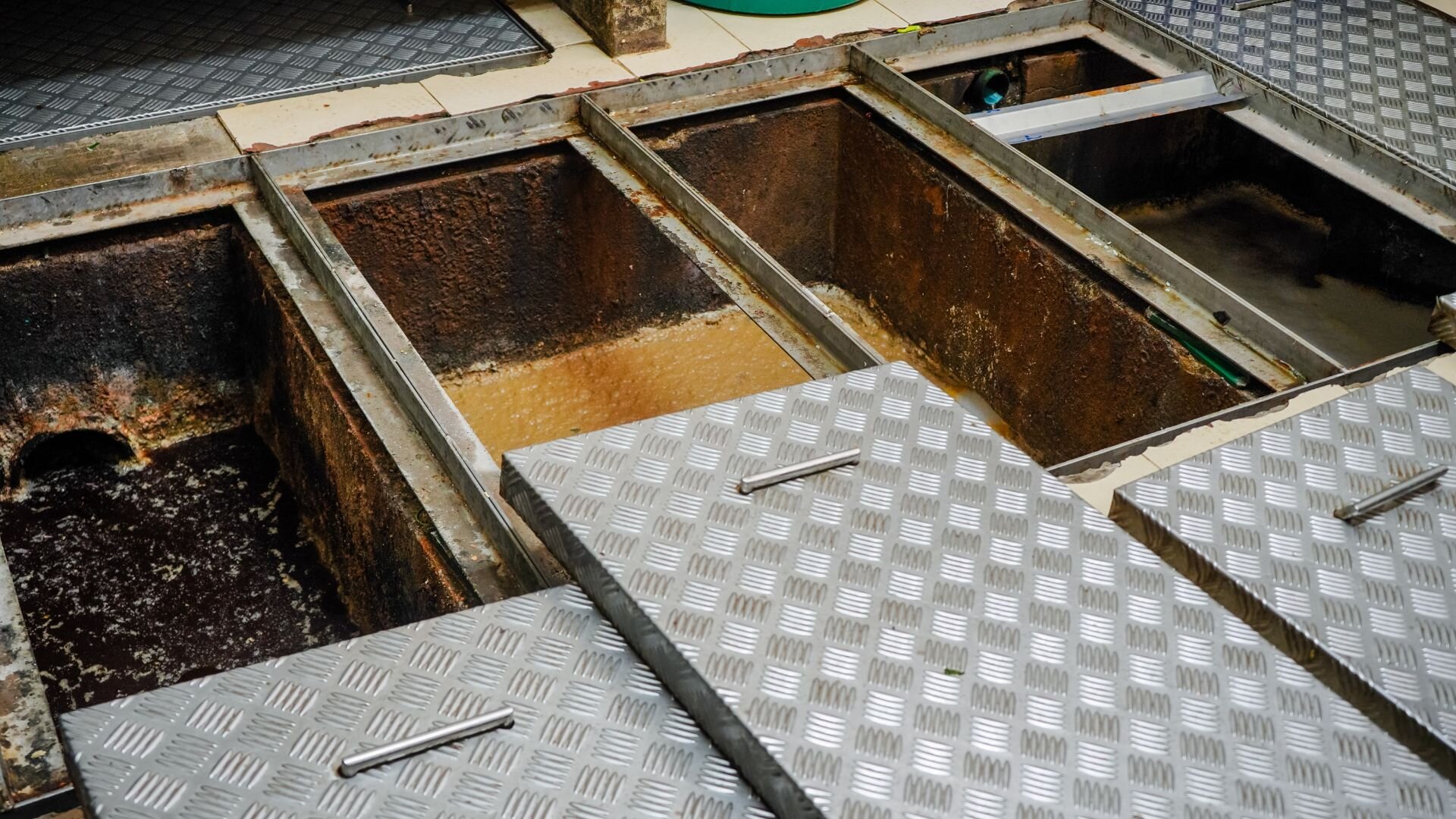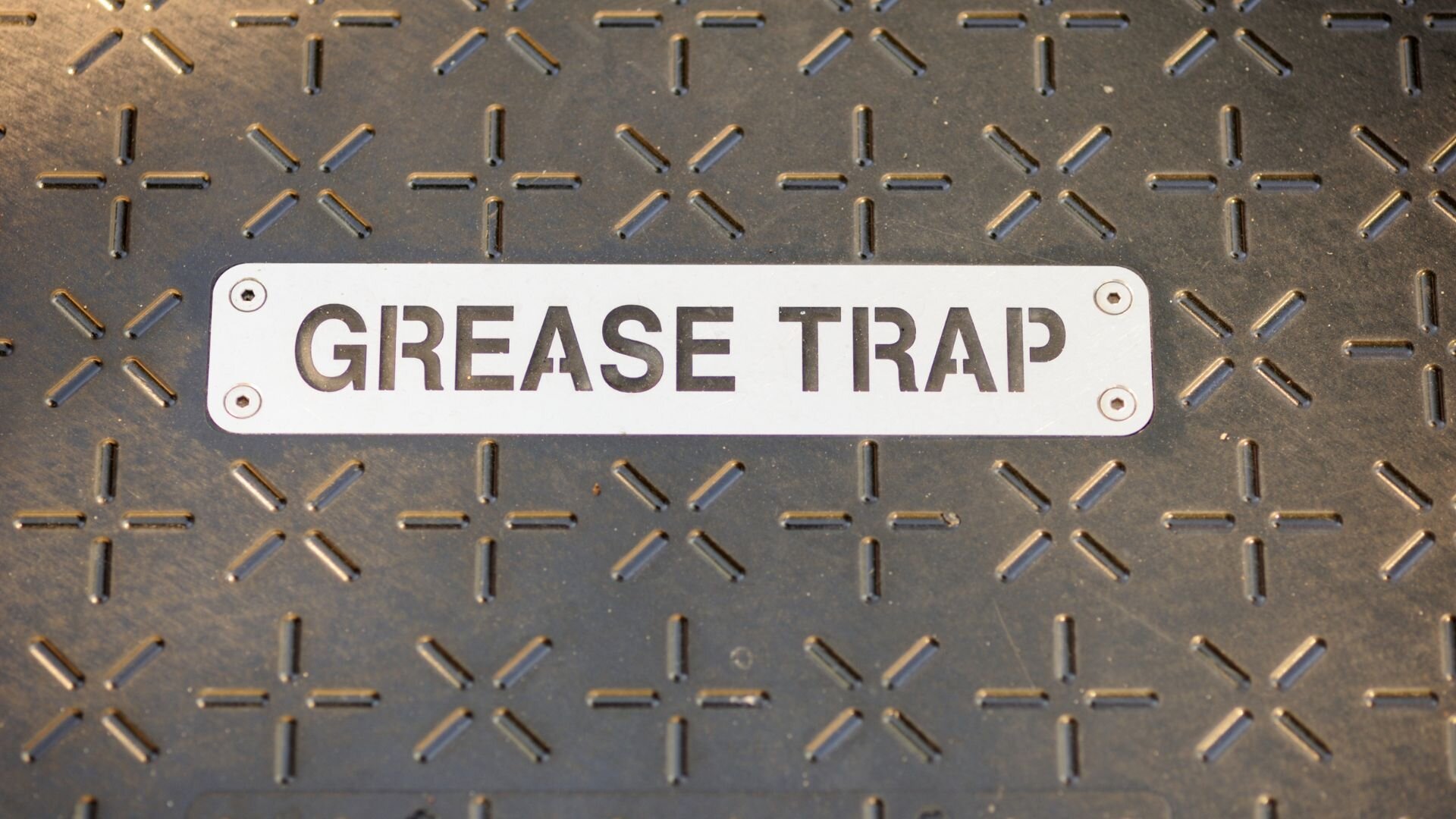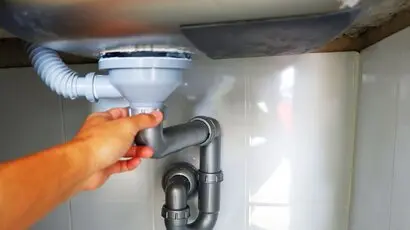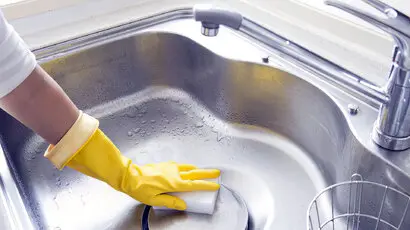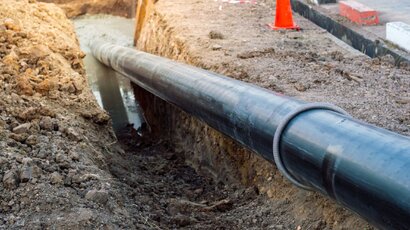Proper grease trap maintenance is essential for any commercial kitchen to stay compliant with regulations, prevent plumbing disasters, and maintain a clean work environment. Neglected grease traps can lead to major issues like drain clogs, rancid odours, and potential health hazards for staff and customers.
This detailed guide is designed to help restaurants and commercial kitchens maintain their grease traps while upholding safety standards. By focusing on proper cleaning, regular inspections, and implementing best practices, you can optimise the operation of your grease traps. This reduces FOG (fats, oils, and grease) build-up and helps you avoid costly plumbing repairs.
Ready to learn how to maintain grease traps? Let’s get started!
What Are Grease Traps?
A grease trap is a plumbing device designed to intercept fats, oils, and grease (FOG) waste from the kitchen before entering the main sewer system. Grease traps separate and contain grease and solid food particles while allowing wastewater to flow through. Proper grease trap sizing and installation are essential based on the kitchen’s volume and configuration.
![]()
In commercial kitchens, you’ll often find large, automatic grease trap tanks positioned outdoors, unlike the smaller traps found in home kitchen sinks. Regular cleaning is crucial to prevent FOG build-up, which can block drains and damage pipes. Local regulations typically dictate grease trap requirements to safeguard municipal sewer systems.
Different Types Of Commercial Grease Traps
Passive grease traps
It uses gravity to separate and collect waste FOG in a tank. Requires frequent manual cleaning.
Automatic grease traps
Removes FOG using a skimmer, pump, and control timer for more practical maintenance.
Single compartment trap
One tank compartment cools wastewater, separating grease that floats to the top.
Multiple compartment trap
Two or more chambers provide enhanced grease separation for high-volume kitchens.
Regular Cleaning and Maintenance
![]()
Step 1: Determine Cleaning Frequency
Look at how much your kitchen is used and check local regulations to determine the right cleaning frequency, usually every 2-4 weeks. This helps prevent excessive grease build-up.
Step 2: Pump Out Contents
Using a vacuum truck, pump all wastewater and grease contents from the trap into suitable drums for proper disposal later.
Step 3: Thoroughly Clean Interior
Using scrapers, hot water, and scrubbers, thoroughly remove all thick grease, fats, oils, food waste, and sediment from the trap walls and floor.
Step 4: Inspect Components
Closely inspect baffles, air relief valves, piping, and other internal parts. Look for any damage or issues needing replacement.
Step 5: Make Any Needed Repairs
Replace any worn or damaged internal trap components to ensure proper ongoing operation.
Step 6: Refill with Fresh Water
After cleaning, refill the empty grease trap with fresh water to the proper level before putting it back into service.
Step 7: Follow Grease Disposal Regulations
Never dump evacuated grease and solids down drains or sewers. Arrange proper disposal following local regulatory requirements.
Step 8: Conduct Routine Inspections
In addition to cleaning, regularly inspect the exterior and interior of the trap for any leaks, cracks, or other maintenance needs.
Step 9: Document Service History
Keep detailed logs of each cleaning and inspection: track grease volumes, issues, repairs, and disposal.
Step 10: Stick to Schedule
Maintain cleaning frequency consistently to prevent grease-related plumbing emergencies.
Inspection and Troubleshooting
![]()
Besides regular maintenance, it’s vital to inspect grease traps frequently to catch any issues early. If you see floating grease or solids at the outlet, it indicates the trap may be faulty, allowing FOG to escape.
Bad smells can mean there’s too much grease due to insufficient cleaning. Slow drains or water pooling might suggest blockages caused by leaks in the trap. Visible grease on fixtures shows the trap isn’t working properly. Any leaks around pipes or lids should be sealed promptly.
Thorough, regular inspections and prompt maintenance keep traps working effectively. Comprehensive cleanings and repairs can resolve minor issues. However, recurring or major problems likely need professional plumbers.
Catching problems quickly saves restaurants money and headaches. Consistent inspection and scheduled cleaning provide the best protection against grease-related plumbing disasters.
For minor grease trap issues, take these troubleshooting steps:
- Remove all grease and solids, examine components, and repair as needed. Increase cleaning frequency.
- If drains are slow, plunge sinks and use a drain cleaner to open pipes. Avoid harsh chemicals that harm traps.
- Replace broken interior parts like baffles. Tighten or reseal fittings and lids, causing leaks.
- Adjust traps that are undersized by plumbing in additional pretreatment equipment.
- For recurring or significant issues, engage a professional plumbing service experienced in commercial grease trap repairs and maintenance.
Best Practices for Grease Management
Using sink strainers, thoroughly scrape plates, and remove any leftover grease and food residue before washing to minimise excessive FOG entering the system. Let hot grease cool and harden before disposing of it to prevent pipe damage. It’s helpful to post clear signs reminding staff not to pour oils, fats, or grease down the drains.
Use a commercial dishwasher’s highest heat settings to dissolve more grease. Let degreasing soap soak heavily soiled pans before washing. Wipe away as much grease residue as possible into a container for proper disposal before hand washing cookware. Collect unused cooking oils, trimmings, and drippings in grease bins, not down drains.
Proper training is critical to changing disposal habits. Ensure staff understand the costly damage of letting FOG flow down drains. Implement protocols and training on grease disposal and trap maintenance compliance. Bring in professional services for kitchens with high grease volumes. Licensed experts follow environmental practices for grease evacuation and disposal.
Keep Your Kitchen Compliant and Clog-Free
Effective grease trap maintenance means being vigilant with thorough cleanings, regular inspections, and implementing practices that minimise grease discharge. Promptly addressing any issues is crucial. Well-maintained traps help commercial kitchens stay compliant, optimise drainage systems, and ward off costly plumbing emergencies.
Don’t wait until significant clogs or backups happen - be preventative. Contact the experts at WP Plumbing in Melbourne to set up a customised grease trap maintenance plan tailored to your specific kitchen needs and compliance requirements. Our experienced team specialises in professional trap services, repairs, and installations and has the proper equipment and training for safe, efficient grease removal.
Call today to schedule an inspection and discuss grease trap solutions that keep your establishment running smoothly.
Grease Trap FAQs
What is the preventative maintenance of a grease trap?
Preventative grease trap maintenance involves regular inspection and cleaning to remove accumulated grease and solids, ensuring optimal performance and preventing clogs and backups.
How often should you maintain a grease trap?
The frequency of grease trap maintenance depends on factors such as the size of the trap, the volume of grease generated, and local regulations. Generally, grease traps should be maintained at least once every three months, but more frequent maintenance may be necessary for high-volume kitchens.
How often should a home grease trap be cleaned?
A home grease trap should be cleaned regularly every three to six months. However, the cleaning frequency may vary depending on the grease generated and the kitchen’s usage patterns.
How do you treat a grease trap?
To treat a grease trap, remove any solid debris using a steel pot scrubber or filter to prevent clogs. Then, using an environmentally friendly grease trap cleaning product, pour it into the trap and let it sit for a recommended amount of time. Afterwards, flush the trap at room temperature and boil the water to help dissolve and remove the grease. Regular inspection, cleaning, and proper grease disposal are essential for effective grease trap maintenance.

